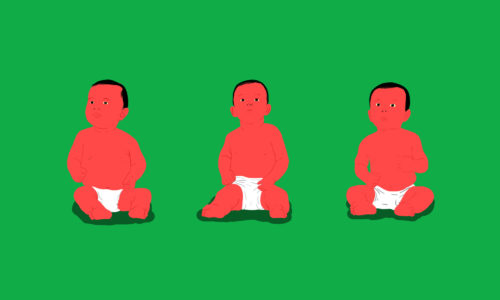China’s three-child policy isn’t leading to a surge in births, data shows
There's a new sense of urgency to China's looming demographic crisis.

China’s three-child policy, introduced two years ago, is not boosting the country’s flagging fertility rate. Newly released data paints a bleak picture of China’s demographic woes, and has prompted calls from population experts for the government to beef up incentives to encourage childbirth.
Among the 9.56 million newborns in China last year, 15% of them were a family’s third child, up only 0.5% from 2021, according to a report released last week by the National Health Commission (NHC). Titled “the 2023 Statistical Bulletin on the Development of Health Services in China,” the document sheds light on the first complete year of data on third children born after the introduction of the three-child policy, and therefore holds significant importance in evaluating the policy’s effectiveness.
As explained by demographic researchers interviewed by Chinese media, because the three-child policy was announced in August 2021, there wasn’t enough time for it to have a meaningful impact on people’s reproductive choices that year. In 2021, the number of newborns in China fell for a fifth straight year, to 10.62 million, barely outnumbering deaths.
But as 2022 rolled around, hopes were high among Chinese officials that the relaxation of birth restrictions would lead to more newborns, especially in families that already had two kids. The optimism stemmed largely from the success of the two-child policy, which increased the percentage of second babies from 45% to more than 50% in 2017, the first full year after China scrapped its decades-long one-child policy.
However, to the dismay of Chinese officials, the three-child policy failed to deliver a baby boom last year, which recorded the lowest number of newborns since China started tracking in 1949. Compared with 2021, while the percentage of third children rose by a marginal 0.5%, the absolute number declined.
To make matters worse, the report also revealed that the share of second babies fell to 38.9% from 41.4%.
The numbers added to a sense of urgency in a country where the government has been grappling with a looming demographic crisis. Last year, China reported a fall in its population for the first time in more than 60 years, which pushed it one step closer to being surpassed by India as the world’s most populous country. The last time China’s population shrank was in 1961, during the Great Leap Forward, when tens of millions of people died of starvation and related diseases.
Over the years, China’s demographic patterns have been largely shaped by the controversial one-child policy, which was put in place in the late 1970s to curb a surging population. Families that violated the regulations received financial penalties, and, in some instances, repercussions in the workplace. Through the strict enforcement of the family planning rules, many women were forced to have abortions, with men being encouraged to undergo vasectomies. According to the government, some 400 million births were prevented as a result.
However, in 2015, worried about the rapid aging of its labor force, China ended the one-child policy, permitting couples to have a second child. Six years later, Beijing expanded the allowance to permit up to three kids.
In the meantime, the central and local governments have been aggressive in persuading people, especially young couples, to reproduce, using public information campaigns, official exhortations, financial incentives, and benefits like extending mandatory maternity leave periods.
But despite a short-lived bump in birth rates, these measures have yet to deliver any significant, long-lasting results. In 2022, China’s fertility rate plummeted to a record low of 1.09, which was far below the replacement level of 2.1 needed for a stable population.
Adding to growing concerns over China’s ability to reverse course, there’s also a stubborn downward trend in marriage. Around the same time that the NHC released its annual bulletin report, China’s Ministry of Civil Affairs published a roundup of key figures about its work in 2022. The document shows that a mere 6.83 million Chinese tied the knot last year, down from 7.63 million in 2021 and significantly lower than the peak of about 13 million recorded in 2013.
Earlier this year, to weaken the link between marriage and childbearing, the local government of Sichuan — home to nearly 84 million people — announced it would allow unmarried individuals to register the births of an unlimited number of children and enjoy parental benefits previously reserved only for married couples. While a provincial health official told domestic media that the policy shift was not intended to encourage childbirth before marriage, many believed that it was part of a broader attempt by Beijing to boost the country’s plummeting birth rate.




